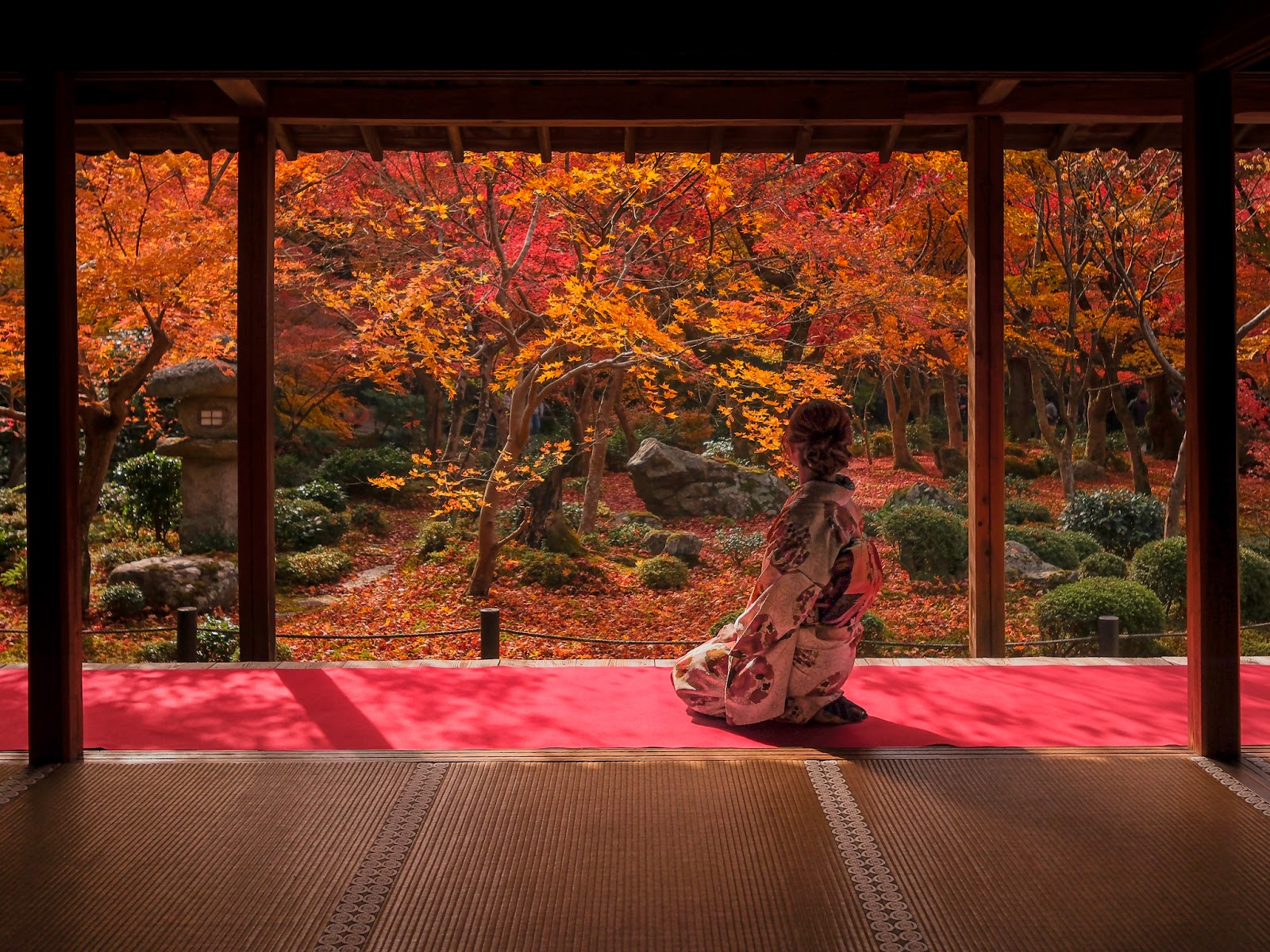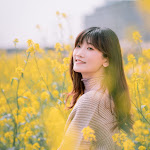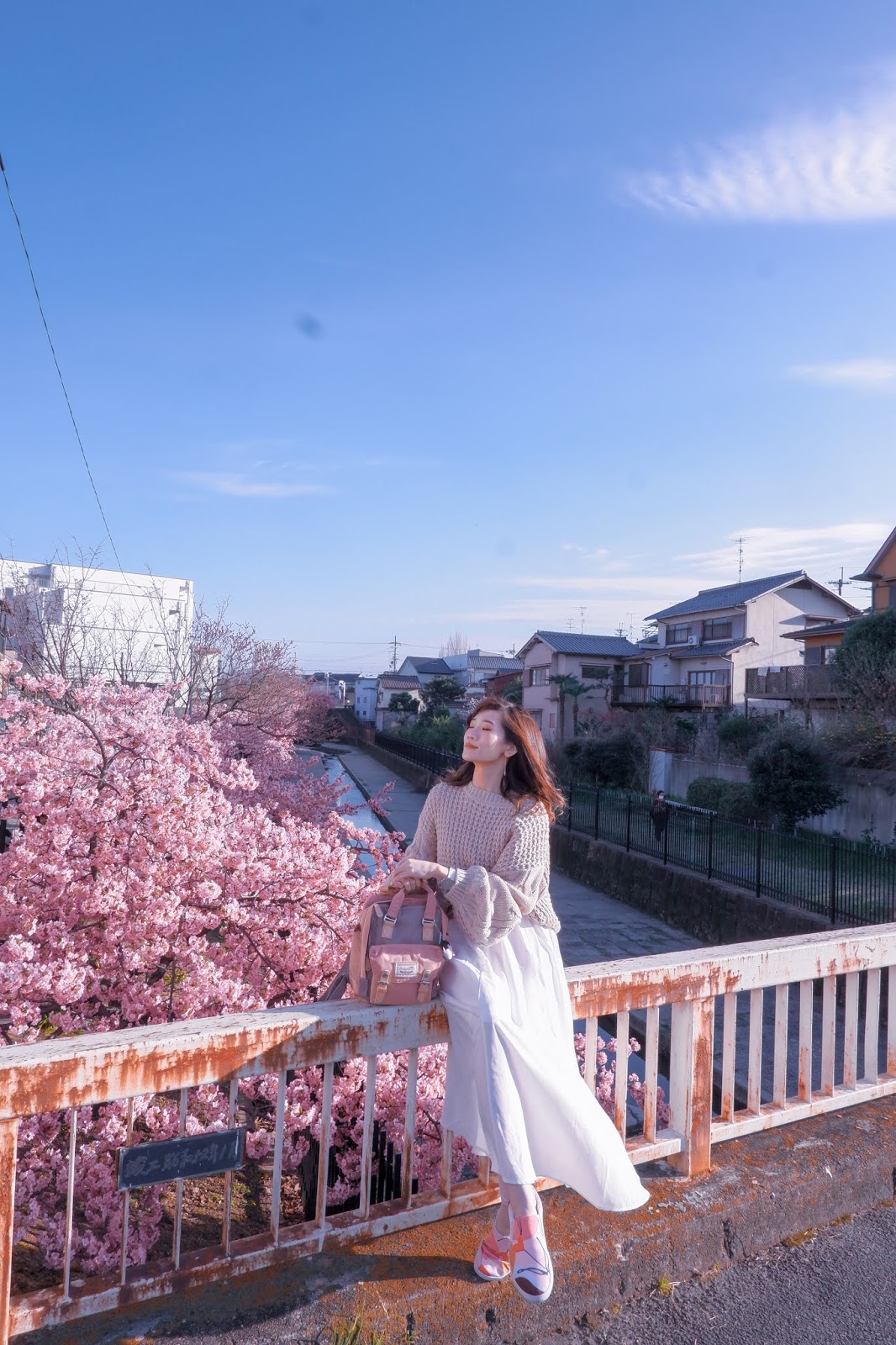Mineyama The Golden Silk Road of Kyoto | origins of kyotango chirimen
Gotta first and foremost thank Kansai Travel Team for this opportunity to explore the lesser known parts of Kyoto. Even after living in Kyoto for the past 2 years and having travelled up north at least twice, I can’t believe I missed out on this gem!
For those of you who aren’t familiar with the northern part of Kyoto (which is about 2 hours drive from Kyoto station or 3 hours drive from Osaka station), it’s fondly known as “Kyoto by the sea” and a few of its popular attractions such as Amanohashidate (heaven’s bridge) and recently Ine no Funaya’s popularity has been picking up too. But in between these 2 spots lies a quiet town name Mineyama, known during its glory days as the “Golden Silk Road of Kyoto” where Tango Chirimen originates from (the highest quality of silk in Japan).
For those of you who aren’t familiar with the northern part of Kyoto (which is about 2 hours drive from Kyoto station or 3 hours drive from Osaka station), it’s fondly known as “Kyoto by the sea” and a few of its popular attractions such as Amanohashidate (heaven’s bridge) and recently Ine no Funaya’s popularity has been picking up too. But in between these 2 spots lies a quiet town name Mineyama, known during its glory days as the “Golden Silk Road of Kyoto” where Tango Chirimen originates from (the highest quality of silk in Japan).
You can read my entries about Amanohashidate & Ine no Funaya here:
- https://www.arisachow.com/2018/09/amanohashidate-kyoto-heavens-bridge.html
- https://www.arisachow.com/2019/09/2d1n-miyazu-city-kyoto-itinerary-ine-no.html
Chirimen has played an important role in Japan’s heritage up till today because this is the exact material that is used to make their precious kimono. So last weekend we paid a visit to Mineyama to learn more about its history and tour around for abit to see what this town as to offer. I'll be sharing our itineary with you guys so you'll get a clearer picture of what to do if you do plan to make Mineyama your stop during your Northern kyoto adventures :)
P/s: Included in maps for easier navigation as well and you're welcome lol.
There is no other place in Japan that can give you an authethic experience and introduction to Tango Chirimen except Mineyama, the birthplace of it. And it's more than just a fabric, it's the heritage and soul of Japan that lives on till today.
History of Tango Chirimen
Japan may seem huge on the map and there are many places that can easily make chirimen, but why Northen Kyoto? It's because of their climate, it's naturally a high humidity area that receives alot of rain throughout the year and heavy snow during winter, this kind of enviroment is suitable for delicate silk yarns that breaks easily if the weather gets too dry.
I was told that just 2 years ago the snow was about 1 meter deep but unfortunately due to drastic global warming, snow is almost non existent recently.
Tango weaving history dates back as far as Nara period (奈良時代, Nara jidai which covers the years from AD 710 to 794) and they went through a period of struggle after other parts of Kyoto started developing similar products which resulted a drop in demand tango chirimen. During Edo period, a man named Kinuya Saheiji from Mineyama developed a special weaving tecnique that produces a beautiful luster on chirimen, something that was unseen and unheard of at that time. From there his technique single handedly became the signature speciality of Tango chirimen.
Also Tango chirimen have just recently celebrated their 300th year anniversary!
There is no other place in Japan that can give you an authethic experience and introduction to Tango Chirimen except Mineyama, the birthplace of it. And it's more than just a fabric, it's the heritage and soul of Japan that lives on till today.
History of Tango Chirimen
Japan may seem huge on the map and there are many places that can easily make chirimen, but why Northen Kyoto? It's because of their climate, it's naturally a high humidity area that receives alot of rain throughout the year and heavy snow during winter, this kind of enviroment is suitable for delicate silk yarns that breaks easily if the weather gets too dry.
I was told that just 2 years ago the snow was about 1 meter deep but unfortunately due to drastic global warming, snow is almost non existent recently.
Tango weaving history dates back as far as Nara period (奈良時代, Nara jidai which covers the years from AD 710 to 794) and they went through a period of struggle after other parts of Kyoto started developing similar products which resulted a drop in demand tango chirimen. During Edo period, a man named Kinuya Saheiji from Mineyama developed a special weaving tecnique that produces a beautiful luster on chirimen, something that was unseen and unheard of at that time. From there his technique single handedly became the signature speciality of Tango chirimen.
Also Tango chirimen have just recently celebrated their 300th year anniversary!
For a moment I assumed probably the locals here were cat lovers, something like the cat island-Aoshima but throughout our trip unfortunately no real cats were sighted lol.
Lunch Stop @ Kikunoaya (お食事処 きくのや)
Up north, they are known to serve one of the freshest seafood you can find throughout Kyoto (near the sea remember?). Our lunch stop brought us to this restaurant named Kikunoaya (お食事処 きくのや) located strategically opposite of Mineyama station. Great place to get a bite before starting your exploration around the area!
The meal here felt really homely, maybe it's because of the enviroment and the warm faces that served us, if this doesn't make you home sick; i don't know what else does.
Kira and i enjoying our super fresh lunch set
Kinenko was only 600calories and priced at 1320yen
Kinenko was only 600calories and priced at 1320yen
Getting here:
After lunch we headed to meet our local guide who was going to show us around town via a walking tour, we were brought to see how Japanese chirimen (silk crepe) are made now with impressive modern machinery compared to being hand woven (you won’t see this being done anymore lol, it’s a labour intensive method) at Yoshimura Kigyo, a chirimen factory. Honestly it was my first time seeing how silks are being mass produced (it’s super loud in the room) and being a fashion graduate who did textile studies, this was a dream come true!
While walking to our destination, you could see how hauntingly quiet this once busy town was. Hardly any humans in sight and the most you would see are a few cars driving by and soon vanish in the distance. It is a peaceful town no doubt but i hope they do continue to thrive for the years to come because there aren't many left throughout Japan to carry on the craft and skill.
I've visited quite a number of off the beaten path locations in Japan and what's left of its former glory days, it does thug s string in your heart and i do hope that any form of tourism contribution may help keep these towns on their feet. I am seriously contemplating to move here and learn the art of weaving chirimen like how my grandmother in law once did but its a skill she'll be carrying to her grave because no one in the family is interested to pick it up :'(
Cycling around town would definitely be a good option to explore around too due to low traffic
The town that inspired all the designs and colours of Tango chirimen
Boy, we didn't expect the weaving machinery to be super loud, but it was fun to see how they use templates that resembled "braille" to weave out the patterns on chirimen and it's huge too. To our curiousity we did ask how were the staffs able to stand such loud noises everyday, turns out that ear plugs were a necessity for the job lol.
Yoshimura Shoten
Yoshimura Shoten
Each roll of chirimen is manually hand checked by an experienced chirimen checker who’s been also doing this profession for decades, the fabric is put over a light box to be scan thoroughly before it’s being approved, and average roll of chirimen is roughly about (39cmx13meters). Getting to see all kinds of designs and textures of these precious tango chirimen up-close is definitely once in a lifetime opportunity!
Chirimen Fish & Fabric?
Also a fun fact, i'm sure you have came across the word "chirimen" while shopping at a local Japanese grocery store and it's usually found at the fish section. Chirimen is a term for dried small whitefish (when it's not dried, it's called shirasu), and why would this fish share the same name as precious Japanese woven silk?
It's because dried small whitewish resembles the fabric especially when it's in and out of water hence the name lol.
Chirimen fabric shrinks after it comes in direct contact with water and dries up (i found out by accident because i washed my chirimen purse). So never wash your chirimen, send it for dry cleaning!
Hard at work checking every inch of the chirimen
Chirimen Fish & Fabric?
Also a fun fact, i'm sure you have came across the word "chirimen" while shopping at a local Japanese grocery store and it's usually found at the fish section. Chirimen is a term for dried small whitefish (when it's not dried, it's called shirasu), and why would this fish share the same name as precious Japanese woven silk?
It's because dried small whitewish resembles the fabric especially when it's in and out of water hence the name lol.
Chirimen fabric shrinks after it comes in direct contact with water and dries up (i found out by accident because i washed my chirimen purse). So never wash your chirimen, send it for dry cleaning!
Silk yarns before they are woven, right now they are mostly imported from overseas due to mass production demands unlike hundreds of years ago where they still breed and harvest their own silk worms.
It was an honor to meet the owner of Yoshimura Shoten, who proudly showed us a collection of silk chirimen designs that would make you wish you had the money ready to just buy on the spot. In case you are wondering why are they made these specific sizes when conventional fabrics are usually found in longer rolls.
From my studies i learned that kimono are made with very minimal cuts to prevent fabric wastage, so the rolls are made such a way that you only need to split it into a few panels for the main body part and the sleeves (chirimen is super duper expensive) unlike how we sew our normal clothes which the pattern is much more complex and we end up wasting quite a portion of the fabric. Finally my knowledge in dressmaking comes in handy haha, and trust me i attempted making one through observation of a completed piece and it was difficult to handstitch everything together.
Me holding up a koten moyo (classic) pattern chirimen, one of the oldest design in Japan and it's called kōjitsunagi (Interlaced Kō Characters)
Here's an upclose picture of the kōjitsunagi
In case you are wondering what's the average price of a roll of chirimen, it costs about 500,000yen and the most expensive is 1000,000yen according to the owner. This is just the roll of fabric itself, not including the workmanship for a complete kimono, so that explains why an original silk kimono is considered a heirloom piece because it's very expensive for an average Japanese person to own. Most Japanese would go to a kimono rental shop if there is a need to wear for a special occasion, and you'll be surprise to know as well that not many Japanese knows how to wear a complete kimono on their own so they don't see the need to own a kimono at home these days.
Precious fabrics of Kyoto, till today worn by maiko & geiko-san
Customized design of popculture icons requested by one of their customers.
For requests like these, they'll have to make a special template and it's usually quite costly.
Customized design of popculture icons requested by one of their customers.
For requests like these, they'll have to make a special template and it's usually quite costly.
So happened we visited during Hinamatsuri month (girl's/ doll's day) so here are some of the doll display found at Yoshimura Shoten and they are wearing Mineyama silk chirimen!
From Yoshimura shoten our next stop was Kotohira shrine (nicknamed Konpira-san 金刀比羅神社 ) to visit the guardians of Mineyama, remember the cat statues I mentioned earlier? Yep, these were the guardians and they are called “Komaneko”. A rare guardian too and it’s said to be the only place in Japan to have them as it’s more common to find Komainu (lion-dog) guarding shrines instead of cats. Why cats of all animals?
Home to Konpira, God who protects sailors, fishermen, or anyone working at sea
There are at least 30+ Kotohira/ Konpira shrines throughout Japan, so when you google the name don't be surprised if they suggest the main shrine in Kagawa prefecture instead of Mineyama, Kyoto 😂
It’s because Mineyama is a town that mainly produces silk and to make them they’ll need silk worms and natural predators/ pests like rats will often feast on silk worms/ cocoons or damage readymade fabric rolls by biting them. There are at least 30+ Kotohira/ Konpira shrines throughout Japan, so when you google the name don't be surprised if they suggest the main shrine in Kagawa prefecture instead of Mineyama, Kyoto 😂
So the natural enemy of rats are cats and over the centuries because of them keeping the pests at bay, Mineyama’s business was able to flourish therefore chirimen businesses here will give thanks to Komaneko, the guardian cat. Now it’s a norm to see komaneko all over Mineyama as it has become part of the town’s culture; even school children would paint komaneko figures and leave them by Kotohira shrine, so don’t be surprised if you are greeted with tons of colourful komaneko statues on the way up!
Painted and donated Komaneko statues by the local community
The entrance of Kotohira Shrine
Ikumen komaneko
Getting Here:
We’ve also made some Komaneko masks while we were here to bring home as souvenirs, pretty fun to randomly paint whatever comes to mind lol. I will update more information about this hands-on activity once i have gotten more details on how you can sign up for it.
Going around town in our komaneko masks, gotta blend in!
We heard along this canal are filled with sakura trees, during spring the view must be spectacular.
I love walking tours because it definitely makes you slow down to absorb in all the small details in the area, things that you will definitely miss if you are just driving by.


Souvenirs to get in Mineyama
Onojin Soy Sauce Factory (小野甚味噌醤油醸造)
Our last stop of the day was a 108 year old soy sauce factory.
A mustn’t miss out spot for fermented food lovers because they have one of the best tasting seasonings and miso paste sold here with a friendly couple to greet and spoil (pun intended lol) you with all the testers available (a whole table full, brace yourselves). Also if you are a fan of amazake (fermented rice drink) make sure to get their non-alcoholic amazake which tastes amazing! Totally regretted bringing back only 3 packets lol.
Rice and other crops grows well in this area due to the difference in temperature from other parts of Kyoto and also its pure souce of water (perks of being in the countryside, less pollutants) allowing them to produce high quality and rich tasting goods, totally different from the ones i've tried so far.
If you love miso like i do then you'll definitely need to buy a few from Onojin's store, there are so many ways to use it in cooking aside from just making miso soup.
Komaneko Monaka
Another souvenier you can bring back from Mineayama are Komaneko Monaka, they are sweet redbean filled desserts with the komaneko guardian's faces engraved on them. It's interesting to see how it has 2 faces on it like a coin, best enjoyed with a cup of green tea!
I find them quite delicious because i'm a huge fan of red bean products (it's my life!) and obviously can't say no to desserts/ snacks lol.
So glad I came on this road trip or else I wouldn’t have known about all these amazing things about Mineyama, will most definitely come back again one day probably during their Komaneko festival in September! Do bookmark this place if you would like to explore off the beaten path routes around Kyoto.
Getting here:
Komaneko Monaka
Another souvenier you can bring back from Mineayama are Komaneko Monaka, they are sweet redbean filled desserts with the komaneko guardian's faces engraved on them. It's interesting to see how it has 2 faces on it like a coin, best enjoyed with a cup of green tea!
I find them quite delicious because i'm a huge fan of red bean products (it's my life!) and obviously can't say no to desserts/ snacks lol.
Yours Truly,












































No comments
Post a Comment
Your Comments puts a smile on my face :)
Thank you!
Note: Only a member of this blog may post a comment.